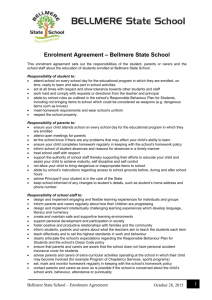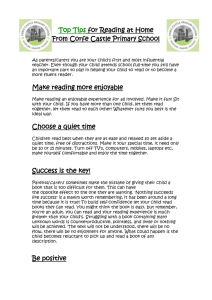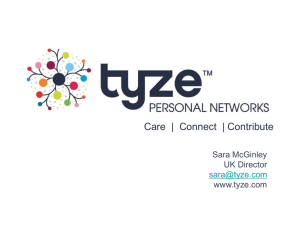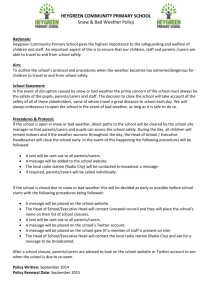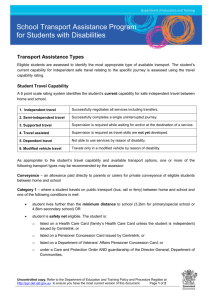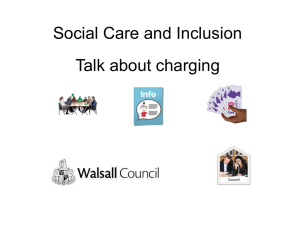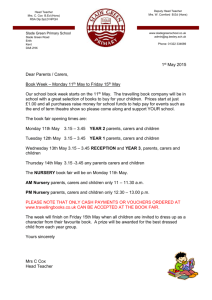Children at risk: Understanding risk factors
advertisement
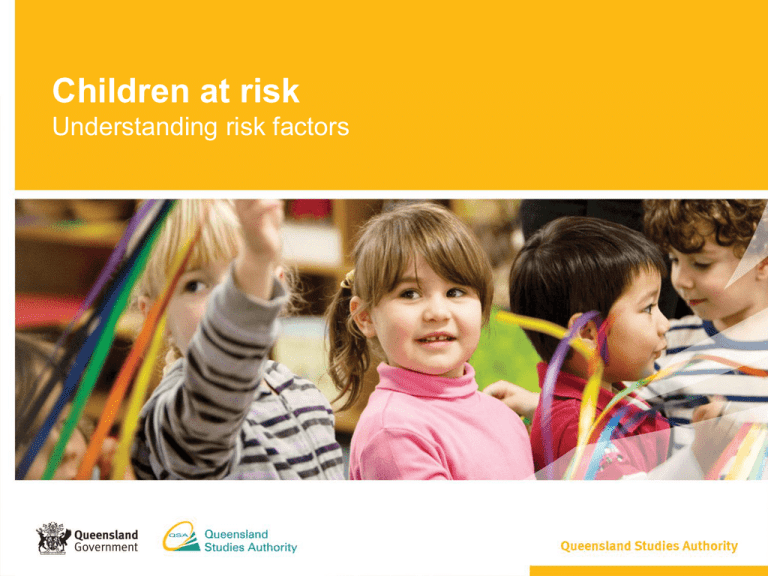
Children at risk Understanding risk factors Purpose This resource provides an opportunity for teachers to understand risk factors. It is recommended that you allow approximately 30 minutes to read, reflect and respond to the questions. Risk factors Risk factors fall into three categories: • environmental, which may include poverty/income, parental style, number/quality of parents/carers, housing, family circumstances and lifestyle, nonEnglish speaking or dual language families, rural and remote communities • physical, which may include diet, nutrition, safety, health and neglect • emotional, which may include verbal abuse, resilience, social literacy and psychological health. Impact of risk factors It is important to note that the presence of one or more risk factors is not necessarily associated with abuse or neglect. Awareness of risk factors can, however, help services to build a picture of a situation in conjunction with known circumstances, observations or disclosures. Strategies to support children at risk Ways to identify and respond to potential risks: • analyse existing information • build relationships with families • create a local community/client profile • follow service policy • communicate with parents/carers. Analyse existing information Start with the enrolment interview, which is the first point of contact to begin to develop a relationship with parents/carers and children. An enrolment interview provides useful information such as family structure, family members’ occupations and language/s spoken at home. Build relationships with families Creating a supportive environment is a major step towards identifying and supporting children and families in need. Engage in open discussion with parents/carers, where appropriate, to invite sharing. Create a local community profile Strategies for creating a community/client profile might include: • researching support groups available in your local community • considering local community characteristics that may impact on children in your Kindergarten program. The sites below have useful information for creating a local community profile: • the Australian Early Development Index (AEDI) for a national collection of information on children’s development http://ww2.rch.org.au/aedi/index.cfm?doc_id=13051 • the Australian Bureau of Statistics (ABS) for additional census data www.abs.gov.au Follow service policy Consult your service policy about gathering information on indicators of possible risk. Consider: • how you might record this information • who you should include in discussions • what action/s you might take. Communicate with parents/carers Consider extra information that may provide insight into a child’s circumstances. For example: • health, physical issues • living arrangements • custody issues • home language. Reflect What actions might your service take to raise awareness of children at risk? How might you approach issues that arise in a way that is respectful, professional and involves the appropriate people to support your actions? Support agencies • Department of Communities, Child Safety and Disability Services www.communities.qld.gov.au/gateway • Kids Matter www.kidsmatter.edu.au/early-childhood • Child Care Exchange www.childcareexchange.com • A Guide to Special Child Care Benefit http://foi.deewr.gov.au/documents/guide-special-child-care-benefit More information For more information and resources on understanding risk factors please visit: • Office for Early Childhood Education and Care http://deta.qld.gov.au/earlychildhood/ • Queensland Studies Authority www.qsa.qld.edu.au/12974.html


